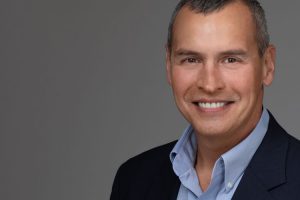Senior Project Manager, Strategic Services Group / President
SSFM International / Building Industry Association of Hawai‘i
What does it take to succeed in your line of work?
Being disciplined and thorough in how you approach your work. Developing credibility and being reliable so people know you are true to your word. These skills or values allow you to build a network of people who have experiences in different aspects of the real estate market and are willing to help you work through problems or challenges you may encounter on any specific project. A lot of the challenge of any project is knowing the right subject-matter experts who can help you understand the problem and identify possible solutions.
What are some of Hawai‘i’s most pressing development challenges today?
A heathy housing market is referred to as a “housing ladder.” The theory is that people buy into a starter house and, as their needs or income increases, they can sell their starter house and buy a larger unit. It allows for owners to move up the ladder as their income or needs increase, as well as move back down the ladder as their needs decrease (i.e. empty nesters). In Hawai‘i, due to the overall lack of supply of housing at all price points, we don’t have a healthy housing ladder. A symptom of this is the “monster house” issue that has recently come up on O‘ahu, where investors are building apartments in residential-zoned neighborhoods because of the overall lack of supply of housing.
We need to increase the supply of housing at all price points, however the overall lack of developable land and lack of infrastructure capacity are constraints that restrict our ability to build our way out of our housing crisis. Future development will largely be restricted to urban infill/redevelopment to provide more density along the transit corridor. Investment in regional infrastructure capacity building is needed to support the planned density.

Are there specific trends you see unfolding in the islands?
There seems to be a recognition among elected officials that we need more housing, however there doesn’t seem to be any agreement on the steps required to get more housing built.
With the wildfire season we just experienced on the mainland, and our weather becoming more and more unpredictable, state and local governments will be taking a larger leadership role in developing policies to address climate change and sea-level rise. State and local governments will have a major impact on how future projects are planned, designed and delivered.
The state and counties will have to find alternative ways to finance major infrastructure projects, as the traditional ways of financing these types of projects are getting more difficult. Large redevelopment projects along the transit corridor, such as Aloha Stadium, will not be realized until there is a significant investment in regional infrastructure capacity building.
A lot of the challenge of any project is knowing the right subject-matter experts who can help you understand the problem and identify possible solutions.
How has your past work experience informed your vision at SSFM? What best practices or insight have you brought to the role?
My experience working in government, nonprofit and private sectors in Hawai‘i provided me with different perspectives and priorities that are unique for each of the sectors. At SSFM we invest a lot of time upfront with the client to get a better understanding of what they are trying to achieve with any particular project.
This was the case on the Alder Street mixed-use project. We were initially hired to plan and repurpose the Alder Street juvenile detention center for the state judiciary. Given its proximity to the Ala Moana transit station, we were able to work out an agreement between the state judiciary and the Hawai‘i Housing Finance & Development Corporation (HHFDC) to build a new juvenile counseling facility and an affordable rental housing project on the property. Judiciary got a new facility and the state was able to provide more affordable housing in the urban core.
We also had success in developing the first vertical elementary school in the state adjacent to Mother Waldron Park in Kaka‘ako. Similar to Alder Street, we brought together the state Department of Education (DOE) and HHFDC to have the school built in conjunction with two rental housing towers. One will be an affordable rental project and the other will be an affordable and market rental housing project. DOE is working out an agreement with the City and County of Honolulu that will allow for DOE to use Mother Waldron Park during school hours through a joint-use agreement. One of the towers and the school are still in the design phase.











